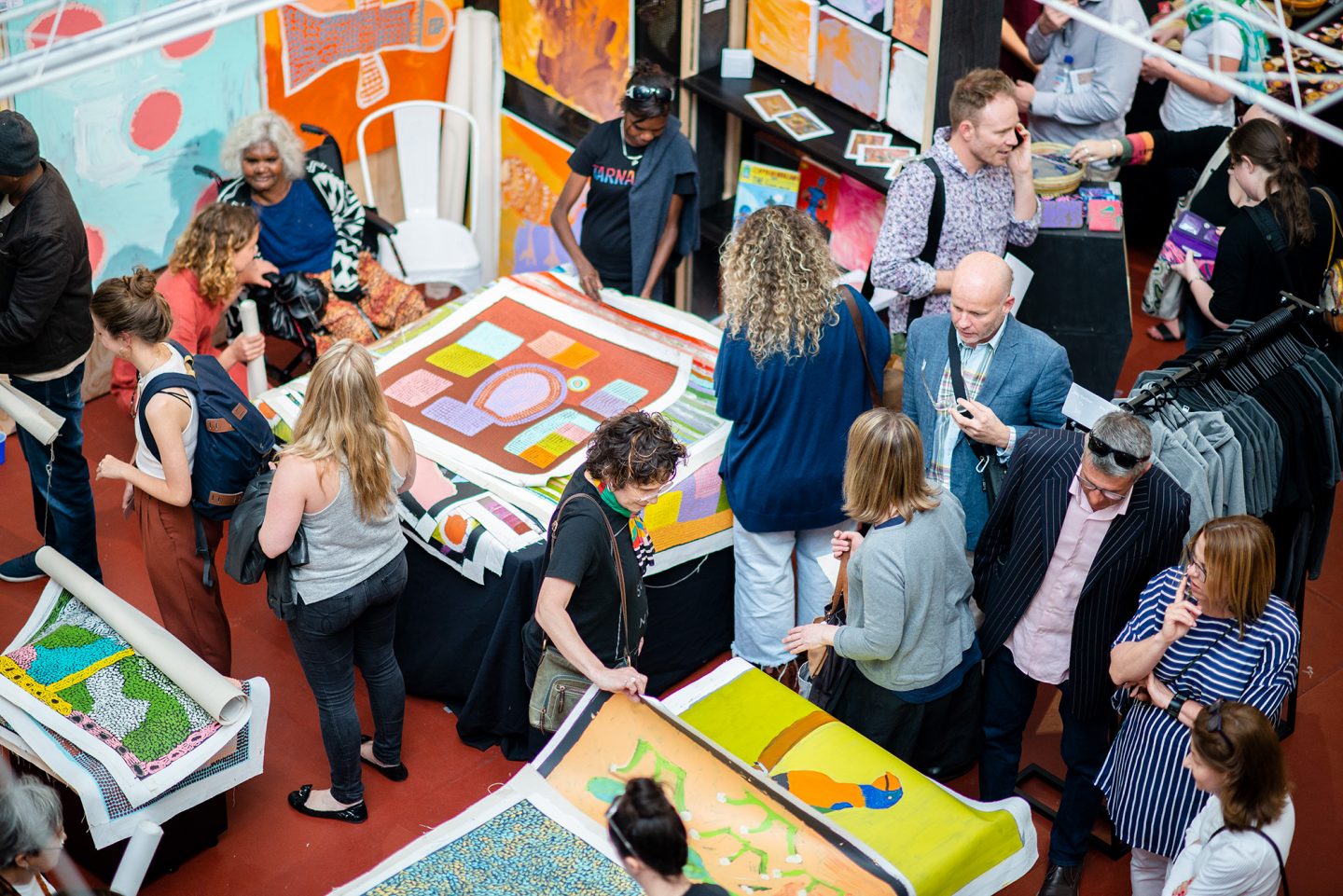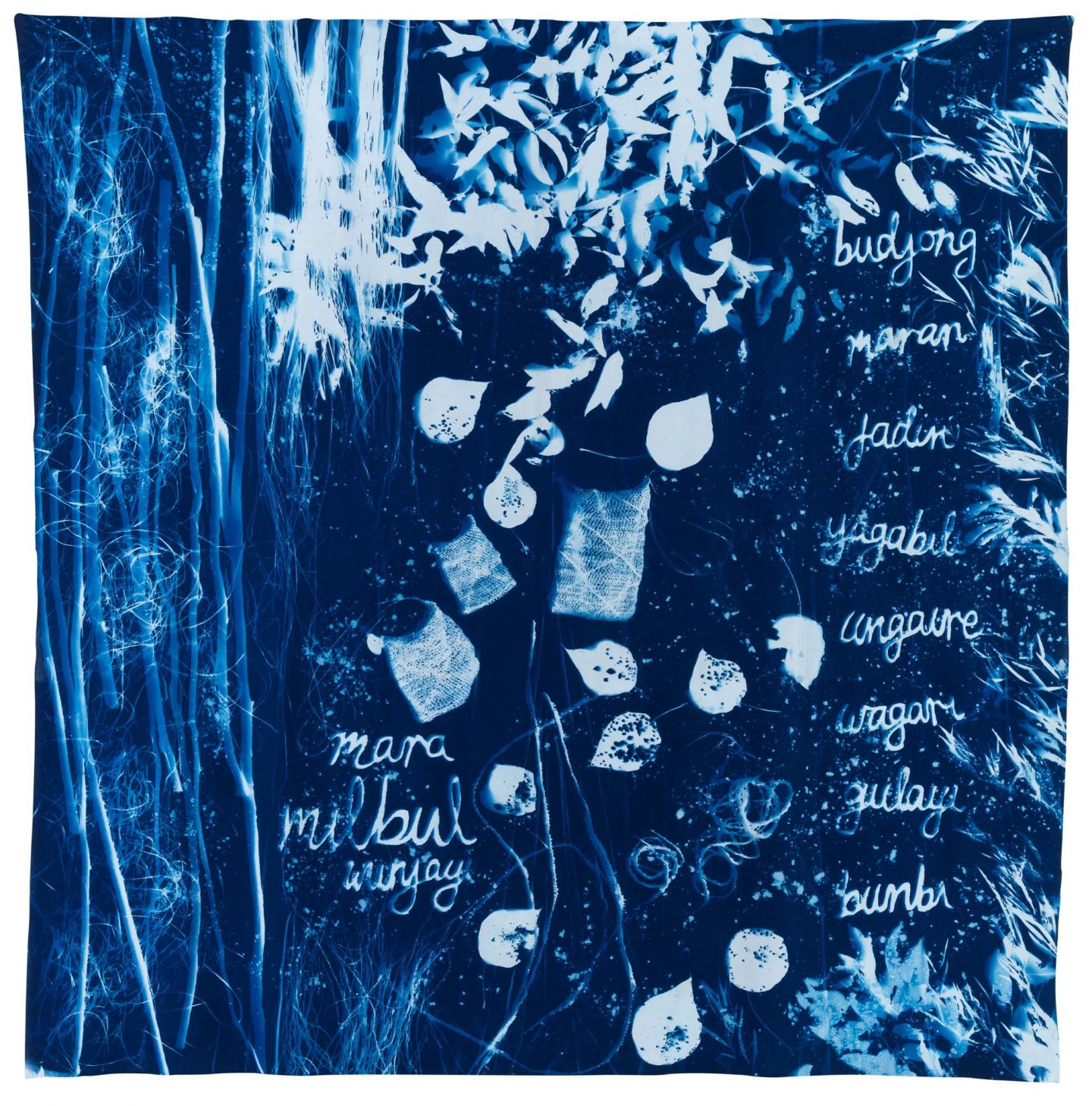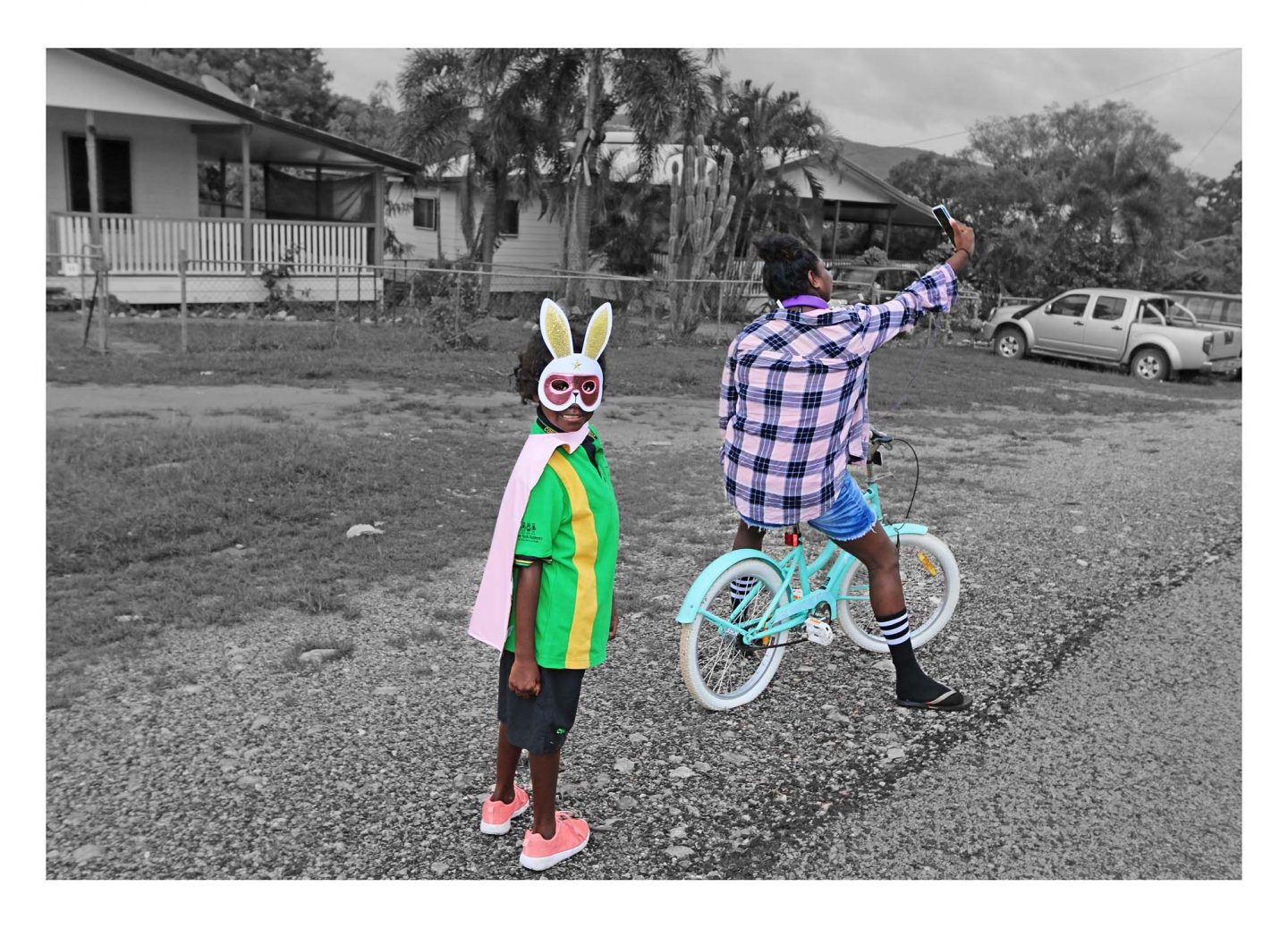Like much of Tarnanthi over the past five years, the unifying theme of 2020 – Open Hands – came out of deep, ongoing conversations between curator and Barkandji artist Nici Cumpston and the artists and families she works with.
“This year we’ve been thinking about the way that knowledge is shared between people in families,” Cumpston tells The Adelaide Review, “but in particular thinking about women, and the way that sometimes that knowledge goes unrecognised.
“And thinking about making – that when your hands are busy, things open up in your mind and different connections happen,” she says, explaining how she recently took up weaving again (“just as a way to enable my mind to think freely”).
Some things will inevitably be different when Tarnanthi returns for its next AGSA-based exhibition in October. But it’s this sentiment, that to some degree has been present in each of Tarnanthi’s past incarnations, that threads through a broad variety of mediums and practices from 87 artists all around the continent.
 “It won’t be the usual affair where people can sift through canvases,” Cumpston says of this year’s Tarnanthi Art Fair
“It won’t be the usual affair where people can sift through canvases,” Cumpston says of this year’s Tarnanthi Art Fair
“Elisa-Jane Carmichel and her mum Sonja, they are weavers from Minjerribah (North Stradbroke Island),” Cumpston says of one of the exhibition’s intergenerational collaborations. “And what they’ve done is create these really beautiful objects from natural materials, like the ungaire (swamp reed) which is found on the island. It’s so beautiful.
“It’s a traditional style of weave that [Sonya’s] had to research to work out how to make, through looking at collections here in Australia as well as internationally. The colours in it are really subtle because the ungaire has this lovely pinky quality, and many different shades of greens through it. We’ll be exhibiting the object as well as a series of cyanotypes onto fabric, quite large-scale three-metre flowing forms.”
Further north, Cape York Peninsula artist Naomi Hobson’s photography series Adolescent Wonderland is a vivid, playful document of the young people in her home town of Coen. “It’s a small town of 360 people,” Cumpston explains, “and this is a series of works where she’s working with the young people in her community to share their stories and give them an opportunity to play up to the camera, and think about who they are and what they want to say.
 Elisa Jane Carmichael, Ngugi/Quandamooka people, South East Queensland, born 1987, Brisbane, Sonja Carmichael, Ngugi / Quandamooka people, South East Queensland, born 1958, Brisbane, Wagari djagun (carry country), 2020, Minjerribah (North Stradbroke Island), Queensland, cyanotype on cotton; Courtesy the artists and Onespace Gallery
Elisa Jane Carmichael, Ngugi/Quandamooka people, South East Queensland, born 1987, Brisbane, Sonja Carmichael, Ngugi / Quandamooka people, South East Queensland, born 1958, Brisbane, Wagari djagun (carry country), 2020, Minjerribah (North Stradbroke Island), Queensland, cyanotype on cotton; Courtesy the artists and Onespace Gallery
“It’s a fantastic body of work, she has really empowered her community to have a voice and see that art is for everyone. Some of the people that were in the images went to see a showing last year at the Cairns Indigenous Art fair, and were just so thrilled to see themselves up on the wall. It opened up a whole new way for them to see photography; it’s not only about her photographic expertise, but it’s about her empowerment of these young people.”
2020 being what it is, that experience won’t be possible for many of this year’s subjects and creators. “It’s involved a lot more communication through writing, telephone calls and Zoom – in some ways it’s been a little bit more one-on-one,” Cumpston says of the challenge of remotely coordinating an already far-flung cohort of artists. “We send images back and forth as we always do, and all of the text that we write. It’s still part of that process, it’s just that unfortunately I’m sure most of the artists won’t be able to attend.”
Instead, Cumpston has been working with Closer Productions to develop a livestreamed virtual launch to connect audiences with artists, while the usual artist portrait videos are set to take a more prominent place in this year’s exhibition. The Tarnanthi Art Fair will also be a little different; more curated, relocated from Tandanya to Lot Fourteen, and rescheduled to December (“it won’t be the usual affair where people can sift through canvases,” Cumpston says).
 Naomi Hobson, Southern Kaantju/Umpila people, Queensland, born 1978, Coen, Queensland, Road Play “She told Mum she was taking me for a ride down the road but she not.” Laine., from the series Adolescent Wonderland, 2019, Coen, Queensland, digital print on paper; Courtesy the artist and Redot Fine Art Gallery
Naomi Hobson, Southern Kaantju/Umpila people, Queensland, born 1978, Coen, Queensland, Road Play “She told Mum she was taking me for a ride down the road but she not.” Laine., from the series Adolescent Wonderland, 2019, Coen, Queensland, digital print on paper; Courtesy the artist and Redot Fine Art Gallery
Despite the setbacks of domestic and international restrictions the international Tarnanthi exhibition announced at last year’s festival will still go ahead. The original plan to bring 2017 Tarnanthi centrepiece Kulata Tjuta – over 500 spears created and suspended in mid-air by artists from across the Aṉangu Pitjantjatjara Yankunytjatjara Lands – to Musée des Beaux-Arts de Rennes in Brittany has been overhauled, and replaced with an array of newly-created work.
“Because we can’t travel, and the artists can’t travel to install it, we had to think how we can still do this, but without that major work,” she explains. “What’s happened is the APY Art Centre Collective have worked with all of the artists – there’s 34 involved – and they’ve created all-new paintings, and there’s a series of spears as well as the spear throwers, and bronzed spears,” she says. “It’s a beautiful installation, and Robert Fielding has also created a suite of photographs of the Elders that will go along too – so people will be able to see the artists.
“It’s a really beautiful body of work, we’re just so proud and so excited,” Cumpston says. “It’s opening day is the same day as the launch for Tarnanthi.” It’s an extraordinary undertaking, and another example of the value of community and family in a year that has brought many.
“Open Hands really resonated well across all of the artists we were working with,” Cumpston says. “Interestingly, in language, the word for ‘hands’ for a lot of language groups is ‘mara’. As I was researching a lot of this, it came to my knowledge that ‘open hands’, that particular term, is something that the Ngangkaṟi – traditional doctors – that’s how they refer to someone who’s a Ngangkaṟi.
“That they have ‘open hands’. It’s just a really lovely resonance.”
Tarnanthi 2020: Open Hands
Art Gallery of South Australia
16 October 2020 – 31 January 2021
Tarnanthi Art Fair
Lot Fourteen
4 – 6 December
This article has been updated
Walter is a writer and editor living on Kaurna Country.
Related Article
Farewell to
The Adelaide Review
1984 – 2020
Get the latest from The Adelaide Review in your inbox
Get the latest from The Adelaide Review in your inbox